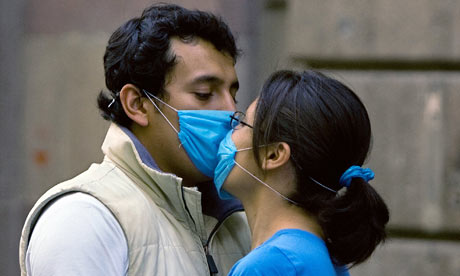Be the Buzz of BIO Winners Announced
Contest Allows Innovative Companies to Compete for Visibility at 2009 BIO International Convention
2009 BIO International Convention
WASHINGTON--(BUSINESS WIRE)--The Biotechnology Industry Organization (BIO) has announced the four winners of the Be the Buzz of BIO contest – a competition which companies entered in order to win free publicity for their company at the 2009 BIO International Convention by submitting an original video describing why their company and innovation should be the buzz of BIO. The global event for biotechnology will take place May 18-21, at the Georgia World Congress Center in Atlanta.
The six finalists in the competition included companies AMRI, Archimedes, BIOBIDE S.L., Impact Systems, Koronis Pharmaceuticals, and Zenda Technologies. All six finalists' videos were posted for voting by the general public, which ended on Friday, April 17. Voters could vote once for companies they viewed as most innovative technology, best quality of presentation, and strength of ideas.
From this list of finalists, the following winners were chosen from across the globe and the biotechnology industry:
BIOBIDE S.L., a company based out of Spain that focuses on automated High Throughput Screening (HTS) of potential new drugs. BIOBIDE has developed a fully automated platform to reproduce the manual process of screening in a 96-well plate format 'in vivo' with zebrafish embryos. View their submission.
"BIOBIDE is very happy to have been selected as one of the winners in the first annual Buzz of BIO contest. We really appreciate being selected as one of the companies considered to have the most impact in the world of biotechnology. And more even thinking on the meaning of this award: having the most Innovative Technology, the High Throughput Screening services offered based on the zebrafish animal model, for toxicity and efficacy assays," said Arantza Muriana, R+D Management Director, BIOBIDE S.L.
Impact Systems, a service provider based out of Delaware, utilizes a solution called Compliance in a Box (CiB). CiB dramatically simplifies the task of implementing a new enterprise content management system. View their submission.
"Impact Systems is thrilled to have been selected as a "Be the Buzz of BIO" winner and to have the opportunity to attend and present at the 2009 BIO International Convention. We commend BIO for creating such an innovative contest to generate excitement for the Community and the Convention," said Mangesh Honwad, CEO, Impact Systems.
Koronis Pharmaceuticals, also a BIO Member company, is a biotechnology company based out of Washington state, developing anti-viral therapeutics based on a novel mechanism, Viral Decay Acceleration (VDA). The Company's lead product candidate is KP-1461 for the treatment of human immunodeficiency virus (HIV). View their submission.
"We are delighted by BIO's recognition of Koronis' innovative approach for the treatment of HIV based on Viral Decay AccelerationTM, a novel mechanism of action that was recently revalidated in a third serial passage study," said Donald Elmer, interim Chief Executive Officer of Koronis Pharmaceuticals. "Koronis plans to resume clinical trials following the completion of on-going formulation work. We would like to thank BIO for this opportunity and look forward to providing an update at the BIO annual meeting."
Zenda Technologies, based out of Georgia, has developed a new technology that for the first time allows primary care physicians to quickly, easily, and objectively add a cognitive health assessment to your annual physical. View their submission.
Lawrence Catchpole, CEO of Zenda Technologies, said, "We are very appreciative of the recognition afforded in being a Buzz of BIO winner and feel that this is a great validation of our innovation in Cognitive Health Assessment technology. Zenda looks forward to bringing our product to market to fill this gap in overall preventative care, to the benefit of patients around the world."
As winners of the contest, the companies will receive complimentary registrations to attend Convention and the opportunity to present their company in the BIO Business Forum in front of industry leaders — showcasing the winners to potential partners. The contest winners join the list of more than 150 research and development companies presenting at BIO. To view a full list of presenting companies, please visit
http://convention.bio.org/businessforum.
"We are thrilled with the over-all quality of the submissions we received for this campaign and would like to congratulate the winners," said Robbi Lycett, vice president of Conventions & Conferences at BIO. "This is a great opportunity for developing companies to meet up with potential investors at our Business Forum and start making the connections their businesses need to continue thriving."
"We are especially thrilled for Koronis Pharmaceuticals, a BIO member taking advantage of our emerging company member benefits such as networking opportunities, access to members' only committees, and significant discounts on BIO conferences," said Amy Finan, vice president, Corporate Development and Marketing at BIO.
The Be the Buzz of BIO contest is part of the new BIO Community website, designed to provide free resources to biotechnology leaders and professionals in order to help them overcome the challenges currently facing the biotech industry.
The BIO Community allows individuals to utilize a "create your own virtual BIO badge" application, access free podcasts, articles, connections to colleagues via myBIO, the BIO International Convention event planner, access to the BIO Convention Twitter channel and the ability to place their community badge on their own LinkedIn, Facebook or social media tools.
BIO tapped the resources of a digital marketing firm,
www.r2integrated.com, for the community tools development.
The BIO International Convention helps to support BIO programs and initiatives. BIO works throughout the year to create a policy environment that enables the industry to continue to fulfill its vision of bettering the world through biotechnology innovation. For more information on the global event for biotechnology, including program and housing information, please visit
http://convention.bio.org.







.JPG)










